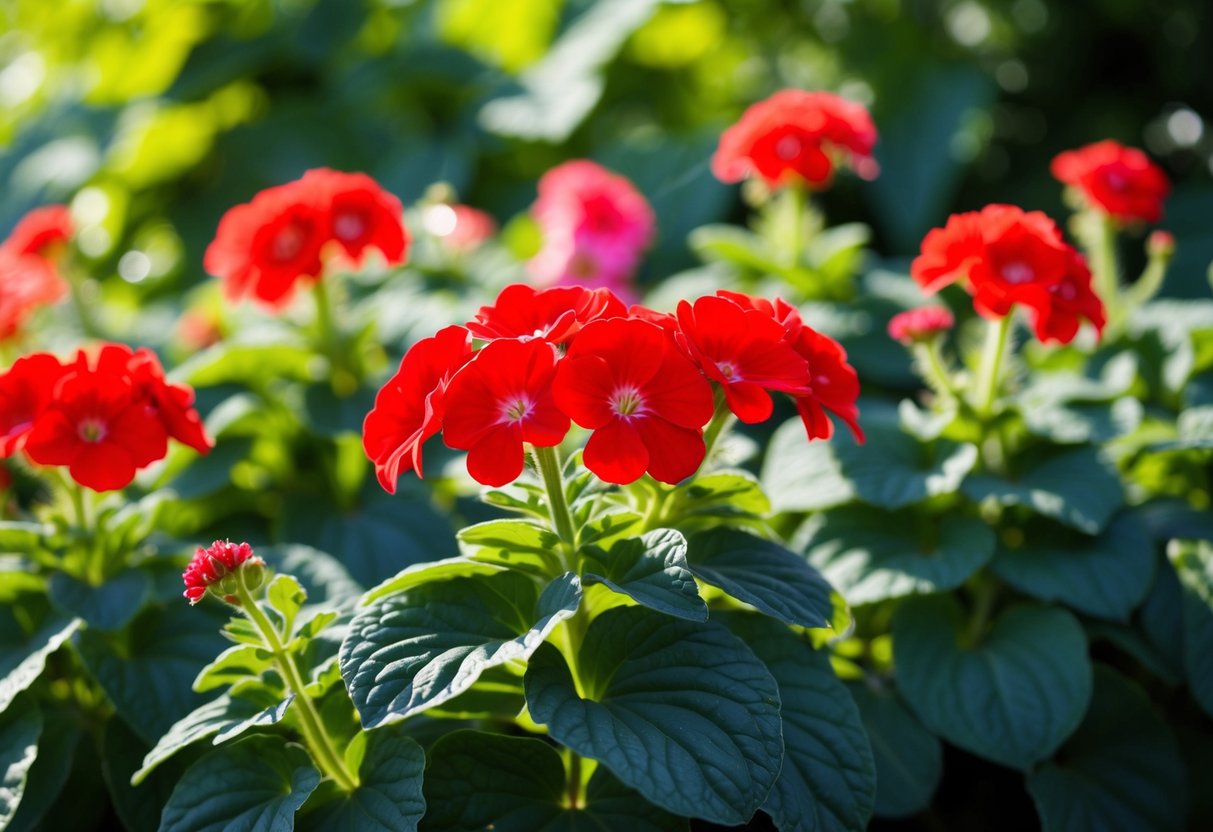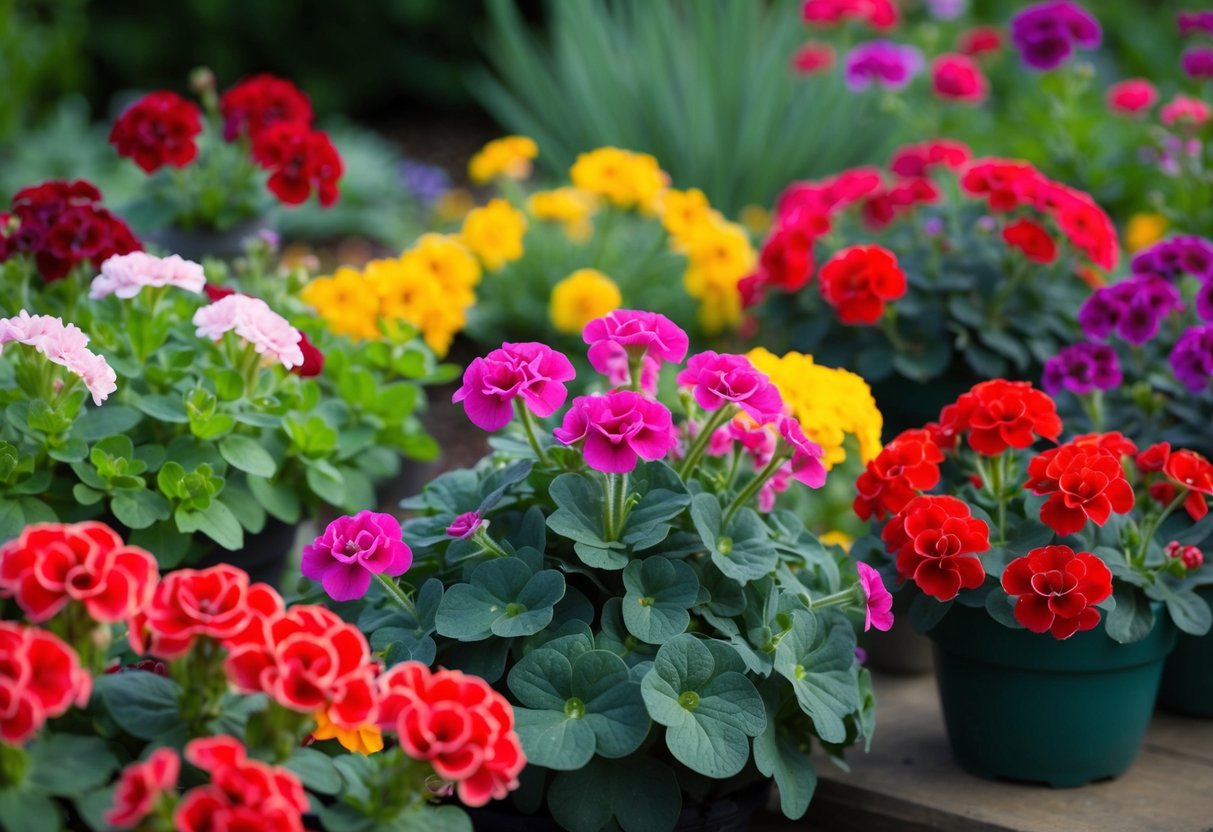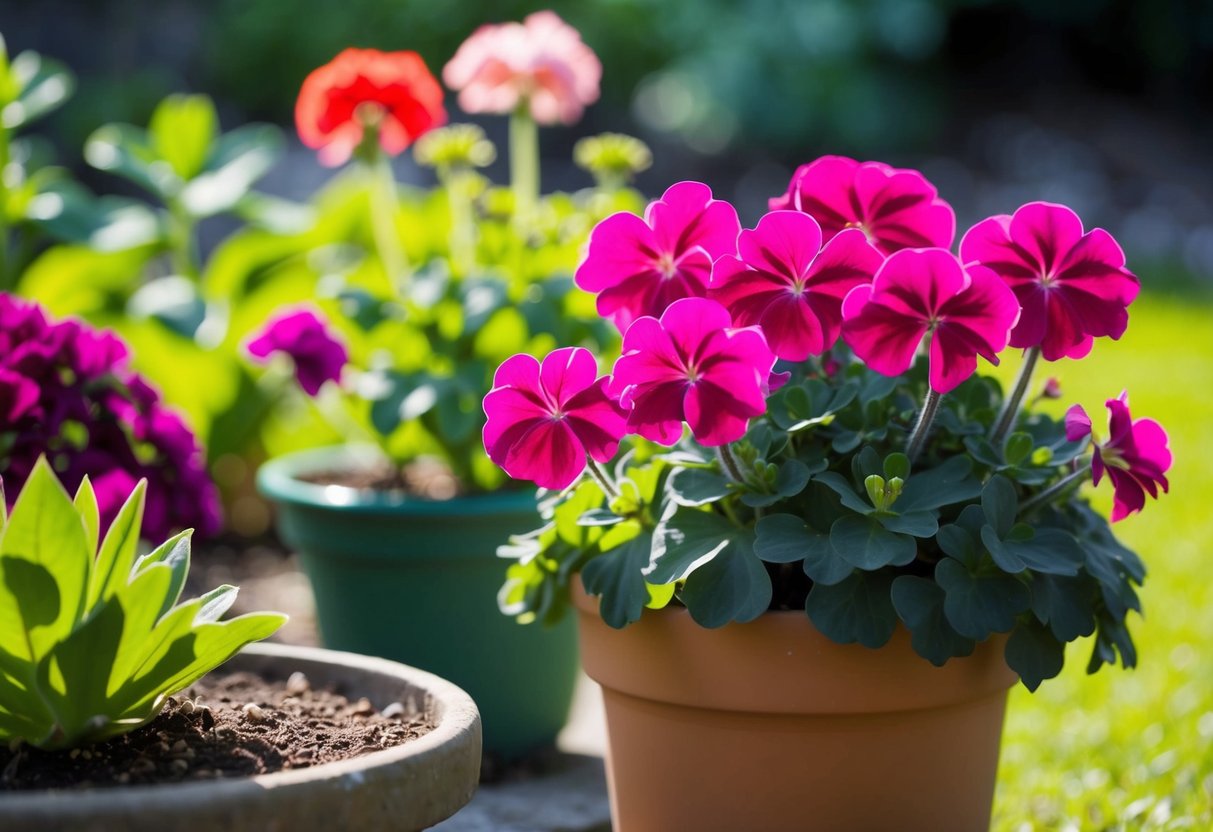Do Geraniums Do Better in Full Sun or Shade? Tips for Thriving Blooms
When you’re thinking about planting geraniums, one of the first questions you might have is about sunlight. Most geraniums thrive best with about 4-6 hours of full sun each day, especially in the morning. This suits their vibrant growth needs, but giving them some shade in the afternoon can prevent overheating and help keep them healthy.

If your garden spot doesn’t get much direct sunlight, don’t worry. Geraniums can also tolerate some partial shade. Just be cautious, as too little sun might slow their growth. For those growing ivy geraniums, a bit more light shade is actually preferred, so you have some flexibility depending on your geranium variety and garden setup.
Understanding where to plant your geraniums can make a big difference in how they grow and bloom. By choosing the right spot, you set your garden up for a colorful season of beautiful flowers. Ready to learn more about optimizing their growth conditions? Keep reading!
The Basics of Geranium Care

When taking care of geraniums, it’s important to consider how much sun they receive daily, the right watering routine, and suitable soil and nutrients. Understanding these aspects helps your plants bloom beautifully and stay healthy.
Understanding Sun Exposure for Geraniums
Geraniums generally thrive in full sun. Most types need at least five hours of sunlight each day to produce vibrant blooms. Placing them in a well-lit area, either in your garden or near a window indoors, can make a significant difference.
Keep in mind that while most geraniums prefer full sun, some varieties like the ivy geranium do better in light shade. If your geraniums start to look leggy, try increasing their sun exposure for better growth.
The Right Way to Water Geraniums
Watering geraniums properly is key to their health. They are drought-tolerant, so it’s best to let the soil dry out a bit between waterings. Consistent overwatering can cause root rot and other problems. Check the top inch of soil; if it’s dry, it’s time to water.
Use a pot with drainage holes if your geraniums are potted. This prevents excess water from sitting at the bottom, which could harm the roots. Remember, geraniums prefer to stay a bit dry rather than too wet.
Choosing Soil and Fertilizer for Healthy Growth
For healthy geraniums, select well-drained soil that allows water to flow through easily. A potting mix with plenty of organic material works well. Good drainage is crucial to prevent the soil from getting too soggy.
Use a balanced fertilizer every month during the growing season to promote lush growth and bountiful blooms. Always follow the instructions on the fertilizer package to avoid over-fertilization. Regular care, including pruning and deadheading, helps keep your geraniums healthy and encourages new growth.
Geranium Varieties and Their Sunlight Preferences

Geraniums come in many types, each with its own sunlight needs. Zonal geraniums thrive in full sun, while varieties like scented geraniums and ivy geraniums prefer shadier spots.
Zonal Geraniums and Sun Requirements
Zonal geraniums are among the most popular types. They have large, vibrant blooms and are perfect for sunny spots. These geraniums need about 6-8 hours of direct sunlight each day to flourish. When you plant them in the right spot, their colors become brighter and their growth more robust.
Too much shade might make them look leggy and sparse. So, if you have a nice sunny area in your garden or on your balcony, zonal geraniums are a great choice. These geraniums not only love the sun but also can handle heat well, making them suitable for warm regions.
Shade-Loving Scented and Ivy Geraniums
On the other hand, scented and ivy geraniums prefer a bit of shade. While scented geraniums are loved for their delightful aromas, they grow best in partial shade. They need protection from the harsh afternoon sun, which can be too intense for their delicate leaves.
Ivy geraniums are similar. They enjoy areas with some light shade, especially in hotter climates. Unlike zonal geraniums, these types don’t need as much direct sunlight and will grow beautifully in partially shaded spots. Both scented and ivy geraniums can add a lovely touch to your garden or home, providing fragrance and charm without needing full sun.
Geraniums in Different Settings

Geraniums are versatile and thrive in various settings, whether indoors or outdoors. Their sun or shade needs depend on where they are grown. Different settings require specific care to ensure vibrant growth and blooming.
Geraniums in Pots and Planters
Pots and planters offer flexibility for growing geraniums. You can easily move them to find the best sunlight. Most geraniums need full sun, so placing your pots in a spot that gets plenty of sunlight is ideal.
Make sure your container has good drainage holes. This prevents water from sitting at the bottom, which could harm the roots. Use a potting mix instead of garden soil to promote better draining and root health.
Caring for geraniums in pots involves regular watering, but be cautious not to overdo it. Containers dry out faster, so check the soil moisture regularly. You might also want to feed your geraniums with a balanced fertilizer every few weeks for optimal growth.
Garden Beds and Outdoor Spaces
Geraniums flourish in garden beds when planted in well-draining soil. Choose a sunny location unless you’re growing ivy geraniums, which prefer some afternoon shade.
Adding organic matter like compost can enrich the soil and help with drainage. This is especially important if your garden soil is heavy clay, which can retain too much moisture.
Space the plants about a foot apart to allow air circulation. This prevents diseases and promotes healthy growth. Water your geraniums in garden beds when the topsoil feels dry, focusing the water at the base of the plant to avoid wetting the foliage.
Hanging Baskets and Window Boxes
Hanging baskets and window boxes are excellent for showcasing geraniums’ vibrant colors. These settings elevate your plants, making them standout features on porches or near windows.
When planting in baskets or boxes, choose a lightweight potting mix with good aeration. This helps the roots to develop properly. Make sure they get plenty of sunlight, but shield them from intense afternoon rays that could scorch the leaves.
Keep an eye on the watering needs, as these containers can dry out quickly due to exposure to air and wind. Water regularly and consider using a slow-release fertilizer to provide nutrients over time.
Indoor Geranium Cultivation
Growing geraniums indoors requires a bright spot, like a south-facing window. Indoor geraniums like consistent temperatures and adequate light. They aren’t as exposed to pests as outdoor plants, but still, keep a look out for any signs of trouble.
Use a quality potting mix and ensure the pot has drainage. Water when the top inch of soil feels dry, and be careful of overwatering as it leads to root rot.
To mimic their outdoor conditions, you might need to provide supplemental lighting during the shorter winter days. Indoor environments can be dry, so misting occasionally or using a humidifier can help.
Common Issues and Solutions in Growing Geraniums

Growing geraniums can be rewarding, but they come with their own set of challenges. Key problems include pest control, disease management, and water-related issues. Understanding these areas will help your geraniums thrive.
Pest Control and Prevention
Geraniums can attract a variety of pests. Aphids, whiteflies, and caterpillars are common culprits. They can damage leaves and hinder growth.
To keep pests away, inspect your plants regularly. Removing infected leaves can prevent pests from spreading. In case of an infestation, use insecticidal soap or neem oil as a natural remedy. Mixing 1 tablespoon of organic soap with 1 gallon of water creates an effective spray solution. Apply this whenever you spot these pesky insects.
Disease Management for Geraniums
Geraniums are susceptible to plant diseases like mildew and fungal infections. These diseases can cause yellowing leaves and stunted growth.
To manage these issues, ensure good air circulation around your plants. This helps to keep moisture levels low, making conditions less favorable for mildew. Remove and dispose of any affected parts to prevent the spread of fungal diseases. Applying a fungicide specifically labeled for geraniums can also be beneficial.
Avoiding Overwatering and Root Rot
Overwatering is one of the most prevalent issues for geraniums and can lead to root rot. This condition occurs when the roots sit in overly moist soil, causing them to decay.
To prevent this, use a ‘drink-and-dry’ watering method. Allow the soil to dry out between waterings. Check soil moisture by inserting your finger into the soil; only water if the top inch is dry. Ensure that your planting soil is well-drained to avoid excess water retention. Using pots with drainage holes further helps to keep roots healthy and rot-free.
Propagation and Ongoing Geranium Maintenance

Propagating and maintaining geraniums involves understanding methods like using cuttings or seeds for propagation, along with consistent pruning and deadheading to encourage lush blooming. As the seasons change, care routines should adjust to keep your geraniums healthy and thriving.
Propagating Geraniums from Cuttings and Seeds
To propagate geraniums, you can use cuttings or seeds. For cuttings, choose a healthy branch around 4 to 6 inches long. Cut it just above a leaf node using a sterile snipper. Remove most of the leaves, leaving only the top few. Dip the cut end in a rooting hormone and plant it in potting soil in a container with drainage holes for better growth.
If you prefer seeds, start them indoors about 10 weeks before the last frost. Plant them in small pots filled with seed-starting mix and keep them in a warm spot with plenty of light. Water the seeds gently and keep the soil moist. This will help them grow strong before you transplant them outside.
Pruning and Deadheading for Lush Blooming
Pruning is important to maintain the shape and health of your geraniums. Regularly trim any dead or yellowing leaves with clean scissors. Snip just above the leaf node to encourage new growth. This helps in maintaining the plant’s shape and health and gives it an attractive bushy appearance.
Deadheading is essential for promoting blooming. Remove spent flowers by pinching them off with your fingers or using scissors. This encourages the plant to produce more blooms rather than seed. By consistently removing dead flowers, your geraniums will focus their energy on growing new, vibrant blooms.
Seasonal Care Tips
During warmer months, water your geraniums regularly, especially if they are in full sun. Ensure the soil is moist but not waterlogged. As temperatures drop, you can reduce watering. Mulch around the plants to help retain moisture and protect the roots during temperature changes.
Fertilize your geraniums every 4-6 weeks with a balanced fertilizer for healthy growth. Adjust these practices based on the climate and conditions specific to your area. Keeping an eye on weather changes and your plants’ reactions helps in providing the best care throughout the year.







